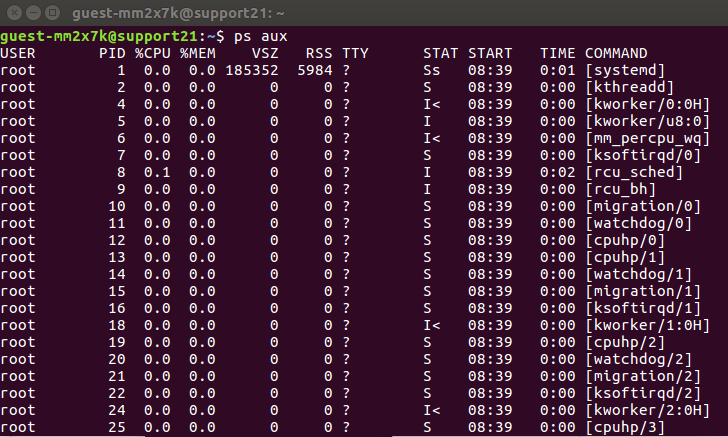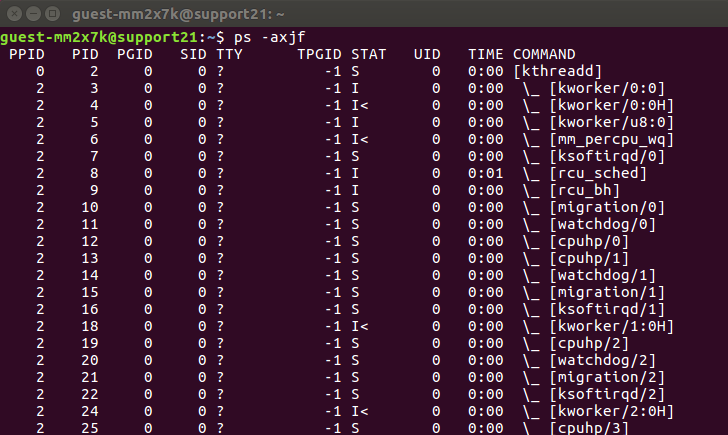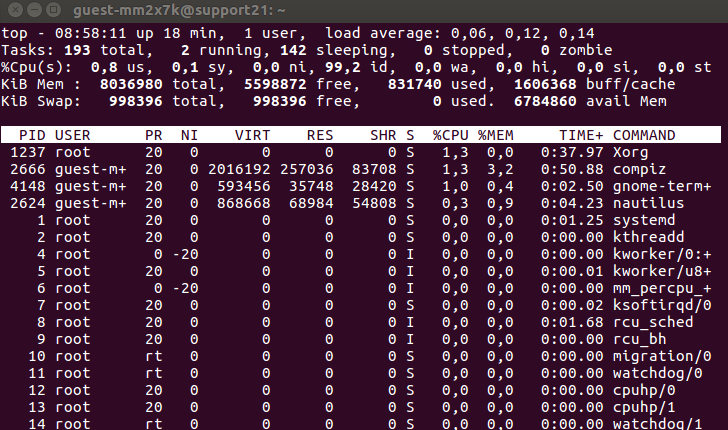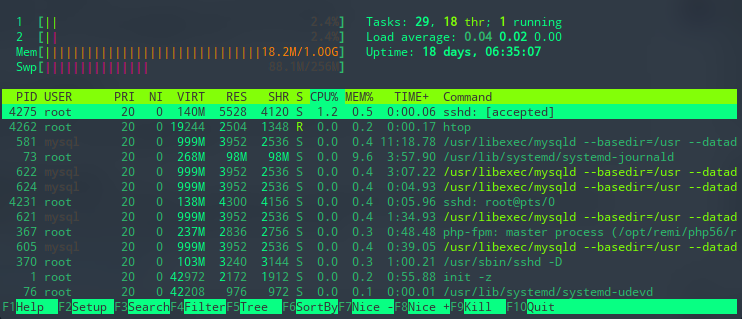How To Check What Services Are Running On Linux File Server
April 14, 2022
Domantas G.
3min Read
How to Listing Running Processes in Linux: A Beginner's Guide
Need to view all running processes on your Linux server and discover which consumes your resources the most? Look no further, considering, in this article, we'll explain how to list processes by using several common Linux commands.
Download Complete Linux Cheat Canvas
Introduction to Linux Processes
A process is the execution of a program. They tin can exist launched when opening an awarding or when issuing a command through the command-line last. Nevertheless, an application tin can run multiple processes for dissimilar tasks. For instance, Google Chrome will get-go a unlike process each time a new tab is opened.
A procedure can exist initiated every bit a foreground or groundwork procedure. Each Linux process is assigned a unique PID (process identification number).
Occasionally, processes may eat a lot of resources and need to be killed. Alternatively, times when y'all may want to change the priority level of a process, so the system volition allocate more than resources to it. Regardless of the case, all these tasks require you to exercise the same thing: listing the running processes on Linux.
How to List Running Processes in Linux?
To list processes in Linux, utilise i of the 3 commands: ps, top or htop. Ps control can likewise exist used with options for a more precise output.
Let'south dive further into each of them.
Utilizing the "ps" Command
The ps (process statuses) command produces a snapshot of all running processes. Therefore, unlike the Windows task manager, the results are static.

When this command is used without whatsoever additional statement or selection, it will return a list of running processes along with four crucial columns: the PID, terminal proper noun (TTY), running time (Fourth dimension), and the name of the command that launches the process (CMD). You can use ps aux to get more than in-depth information about your running processes. Here's a breakdown of each argument:
- a selection outputs all running processes of all users in the system.
- u choice provides additional information like memory and CPU usage percentage, the process country lawmaking, and the owner of the processes.
- x pick lists all processes not executed from the terminal. A perfect example of this are daemons, which are system-related processes that run in the background when the arrangement is booted upward.


If you want to list Linux processes in a hierarchical view, use the ps -axjf command. In this format, the shell volition put kid processes under their parent processes. Aside from those two options, here are some other common examples of the ps command that listing running processes in Linux:
- ps -u [username] lists all running processes of a certain user.
- ps -e or ps -A displays agile Linux processes in the generic UNIX format.
- ps -T prints active processes that are executed from the terminal.
- Ps -C process_name will filter the list by the process name. In improver, this command besides shows all child processes of the specified process.
Using the "tiptop" Command
The tiptop control is used to discover resources-hungry processes. This Linux command volition sort the list by CPU usage, so the process which consumes the virtually resources will be placed at the top. It's also useful to bank check if a specific process is running.

Unlike the ps command, the output of the top command is updated periodically. That means you'll come across real-time updates for CPU usage and running time. In one case the shell returns the list, you lot tin press the following keys to interact with information technology:
| Keys | Functions |
| k | Kills a process |
| M | Sorts the listing by memory usage. |
| N | Sorts the list by PID. |
| r | Changes the priority of a procedure. |
| h | Displays the help window. |
| z | Displays running processes in colors. |
| d | Changes the refresh fourth dimension interval. |
| c | Displays the accented path of a process. |
| CTRL+Corq | Stops the acme command. |
Keep in heed that the keys above are case sensitive, so be sure not to enable the caps lock.
Running "htop" Control
Both the htop and top command display the same information when list your Linux processes, but the former offers user-friendly features that are great for everyday procedure management.
Kickoff affair get-go, the htop command allows y'all to scroll vertically and horizontally. As such, you lot can come across the complete list of your Linux processes forth with their full command lines.
What's more, the command allows you to use a mouse to select items, kill processes without inserting their PIDs, change the priority of multiple processes easily, and and so on.
Unfortunately, virtually Linux distributions don't accept this command right out of the box, and so you need to install it manually.
If you use Ubuntu, you can install htop by running the following command:
sudo apt-go install htop

Once installed, type htop, and you'll get a list of all your Linux processes. Just similar the previous command, htop likewise has several keyboard shortcuts:
| Keys | Functions |
| F9 | To impale a process. |
| F8 | Increment the priority of a process. |
| F7 | Decrease the priority of a process. |
| F6 | Sort processes past whatsoever column. |
| F5 | Display processes in a tree view. |
| F4 | Filter the processes by name. |
| F3 | Search for a process. |
| F2 | Open htop setup. |
| F1 | Display the help menu. |
Conclusion
It is important to know how to list all running processes in your Linux operating system. The cognition will be useful when you demand to manage processes.
Which of the iii commands do you prefer? Share your thoughts in the comment section beneath!
How To Check What Services Are Running On Linux File Server,
Source: https://www.hostinger.com/tutorials/vps/how-to-manage-processes-in-linux-using-command-line
Posted by: whittyinectelithe63.blogspot.com


0 Response to "How To Check What Services Are Running On Linux File Server"
Post a Comment